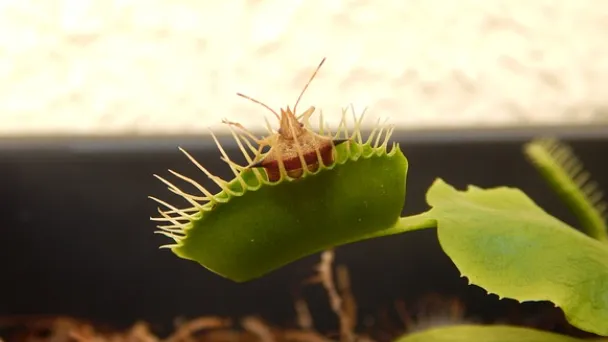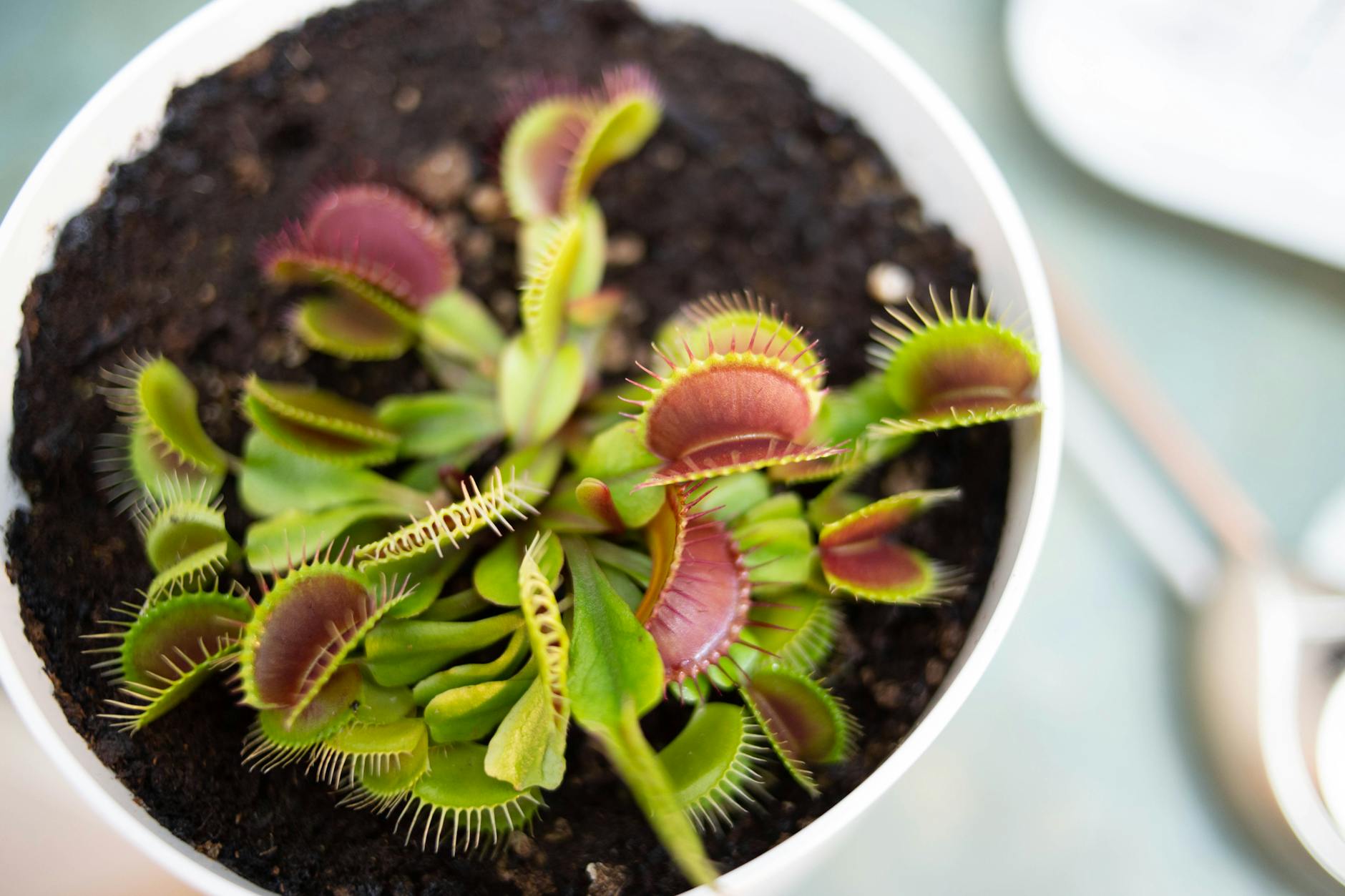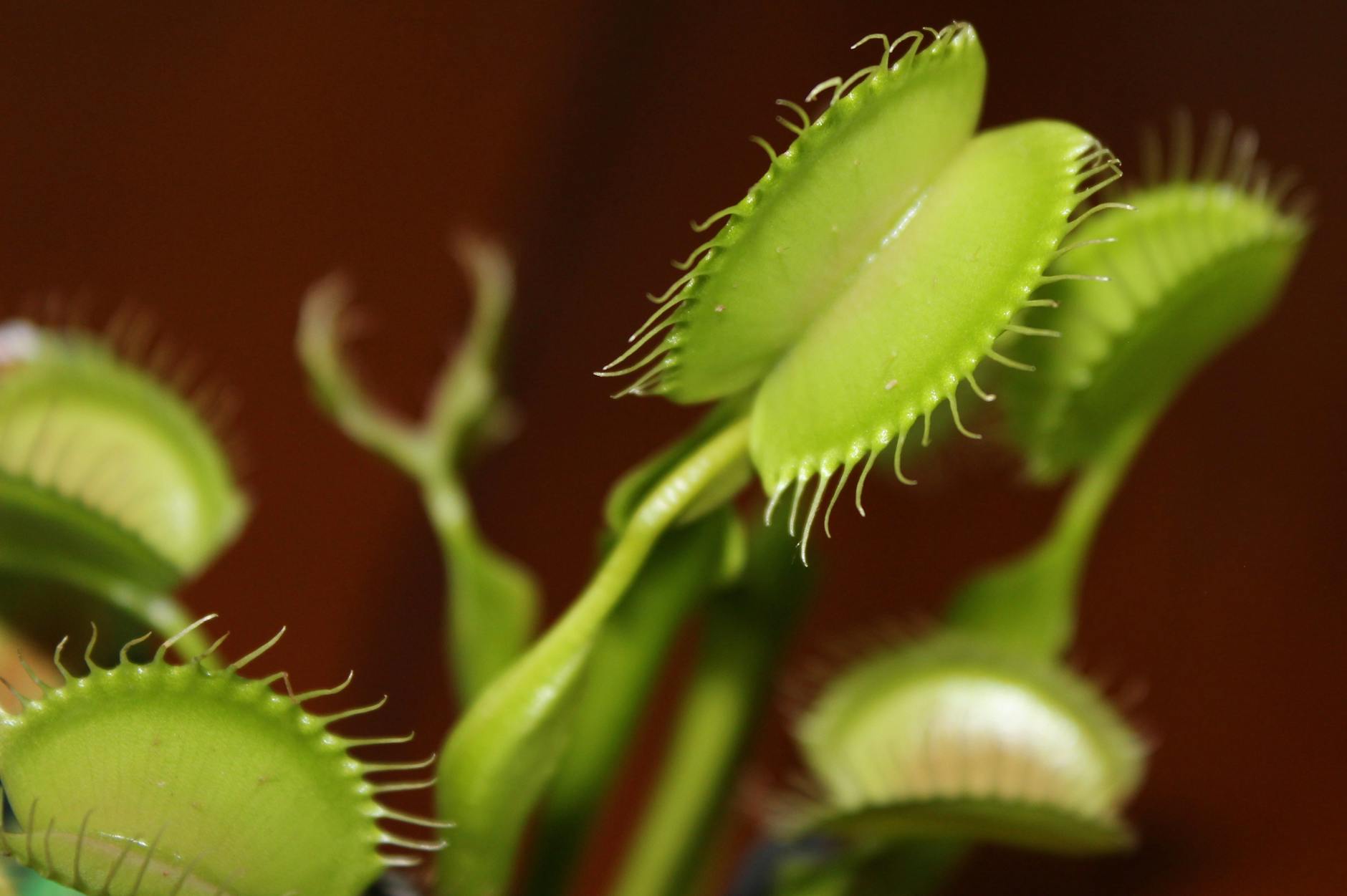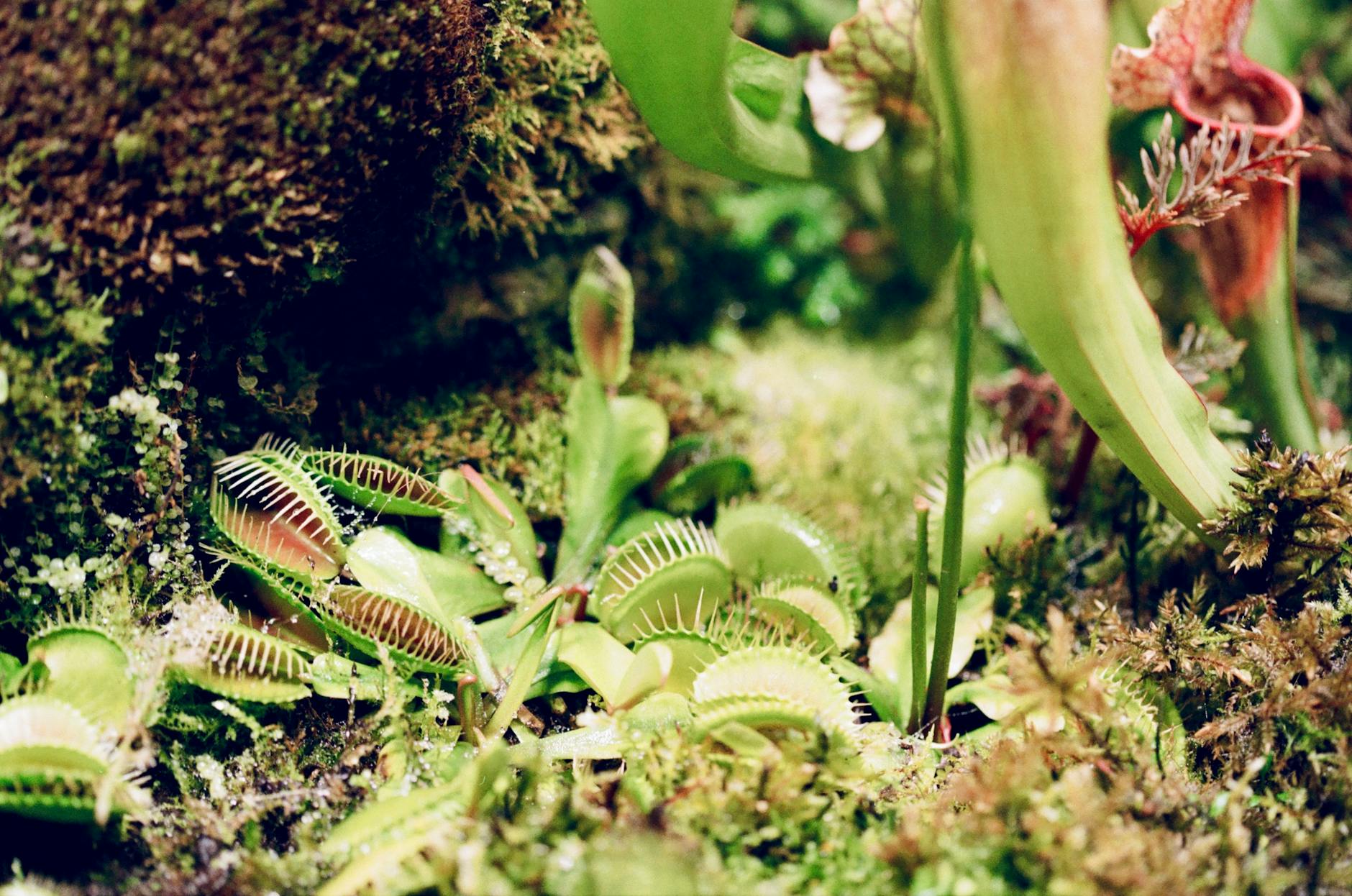How Often Should You Water a Venus Flytrap - Water Frequency
Written by Ivy
Jan 11 2023

Your Venus flytrap's water requirements will vary depending on its stage of development, species, and the local climate. As a result, you should modify the frequency of watering. The venus flytrap, which is semiaquatic and thrives in soft, wetland, is a bog plant, so it's important to keep that in mind. So always keep the soil damp but not soggy.
How Often to Water a Venus Flytrap?
It's crucial to know how frequently to water a Venus flytrap (Dionaea) to maintain a strong, healthy plant.
As they cannot tolerate water that contains dissolved minerals, salts, or chlorine, Venus flytraps must be given distilled water or rainfall.
You should water venus flytraps frequently enough so that their soil never completely dries out and is always moist to the touch. Depending on the climate and the location of the plant.

Watering intervals can range from every 10 to 14 days to every 2 to 3 days.
Keep the soil moist but not drenched during Dionaea's dormant period. Touching the ground should not feel wet and only a few specks of peat moss should adhere to your finger.
On the other hand, if it is grown in long-fiber sphagnum, it should feel damp to the touch like a moistened sponge, but not so wet that it leaks water when pushed or squeezed.
Venus flytraps should only be watered during the growing season when the soil is just moist enough.
This may entail watering it every day until the soil is thoroughly saturated, letting it dry to the point of being just damp, and then watering it again, depending on the size of the pot and how hot and dry it is.
If the summertime weather is hot and dry, smaller Venus flytraps can dry out in a single day. However, even the smallest ones receive regular watering every two to three days for the majority of the year.
Quick Tip: Venus flytrap soil needs to be kept consistently damp. To ensure the health of your Venus flytrap, the ground must remain wet. You can have a healthy, happy plant in no time with the right amount of time and care.
How Much Water Does a Venus Flytrap Need?
North Carolina and South Carolina in the US are the native home of the venus flytrap. They encounter high humidity and a lot of rain in the wild all year long. You must attempt to mimic the Venus flytrap's natural habitat when growing them indoors, down to how frequently they are watered.
Venus flytraps need to be watered thoroughly until the surrounding soil is damp. After that, watering is not necessary until the soil is less humid. Never let the soil get completely dry.
A Venus flytrap's health is at risk if it is overwatered or submerged. A Venus flytrap should feel moist when you press on the soil after watering it; it shouldn't be drenched.
Various environmental factors have a significant impact on the precise watering frequency. Because of this, pressing on the soil to determine its humidity is a better approach.
Summers here in my area can get up to 110 degrees Fahrenheit. I almost always water my plants every day in the summer. You might only need to water your plant a few times per week indoors or in milder weather, though.

How to Water a Venus Flytrap?
Even with perfect watering, the Venus flytrap can grow or die depending on the type of pot and soil mixture it is living in.
Watering During Dormancy
It is best to wait until the growing medium is almost completely dry before watering it once more.
Sometimes, all that is required is a monthly or bimonthly watering. Before rewatering, it is preferable to let the growing medium completely dry out.
It's crucial to keep Venus flytraps moist when they're dormant or when the temperature is cool or cold.
Tray Watering
The tray method might be your best choice if the plant receives a lot of direct sunlight or if you are going on a trip and won't be able to care for your flytrap for a few days.
Drainage Holes
A tray filled with about 1 inch of water should be used to hold your Venus flytrap pot or planter.
The plant will immediately absorb water from the tray through the drainage holes because the soil should be excellent at absorbing moisture.
It would be better to water your plant using a different method if you can keep an eye on it and it isn't getting as much direct sunlight.
Normal Watering
This method of watering will be the best if you can watch your Venus flytrap closely.
It entails watering with whatever you want and keeping an eye on how wet the media is.
Make sure it doesn't get too dry, wet, or soggy; it should always be moist.
Watering from the Bottom Vs Top
Plants are watered from the bottom rather than the top when using the water tray method. For Venus flytraps, the most typical method of watering is from the top. Finding the ideal balance is challenging, so it is usually more difficult.
As it prevents overwatering and encourages root growth, watering from the bottom is a common technique among owners of carnivorous plants. The plant's roots are given encouragement to expand and are given easier access to the water in the tray.
Depending on the type of soil used and the stage of your plant's life, there are a few variations to the water tray method. These topics will be covered in more detail in the following sections.
Factors That Affect How Much to Water a Venus Flytrap
Size of the Plant
Most Venus flytraps are quite small, measuring on average 5 inches across.
But whether they are large or small, they all share the dislike of being overwatered or submerged. Of course, a larger plant will need more water.
You can easily control the amount of watering by monitoring the soil rather than the plant's size.
Simply feel the ground to check that it is damp but not always soggy.
Season and Dormancy
During spring, summer, and fall, the Venus flytrap watering should regularly (daily if necessary) so that its soil is always damp.
The majority of the leaves turn black and die in the winter, when they stop growing. Any remaining traps will no longer close due to the malfunction of the mechanism.
This indicates that the plant is getting ready for its winter hibernation. At that time, water just twice or three times a month, letting the soil get almost completely dry.
This will make it possible for the plant to enjoy the well-earned annual rest it is used to in its natural habitat.
Humidity
It can thrive in both humid and dry environments because the Venus Fly Trap only needs a moderately high humidity level (over 50%).
However, water loss should be closely watched for and replenished as necessary.
Indoor-outdoor Setting
Venus flytraps can thrive in both indoor and outdoor settings.

In order to reduce heat absorption, wrap the pot of your plant in foil or place it on white pots if it is an outdoor plant that lives in a hot or dry climate. You should also limit the amount of morning sunlight your plant receives.
Since there isn't much water evaporation in an indoor environment, this will reflect light; water it when the soil is almost dry.
Watering Level Changes through Venus Flytrap Life Stages
Venus flytraps require different amounts of water as they mature. Additionally, you will need to modify the frequency of watering depending on the season.
Considerations for watering Venus flytraps at various growth cycles are listed below.
- Seeds: To germinate, Venus flytraps require extremely high humidity. They occasionally require a sealed container with a lot of water and a high humidity level. Do not completely submerge seeds when watering. Nevertheless, add more water than usual. Water needs to be soaked into the soil. Because seeds do not yet have roots, there is no risk of root rot from overwatering, and a dry environment can kill them.
- Leaf-cutting or pullings: It takes a very humid environment to grow Venus flytraps. Make sure the soil is kept very moist, just like seeds. Submerging is preferable to overwatering. During this phase, the ground may be wet.
- Seedlings: Once it has grown from seeds or leaf cuttings, a Venus flytrap does not require a lot of moisture. Environments that are muggy but not swampy are necessary.
- Young/ Adult Venus flytraps: In order to prevent the soil from drying out, keep it moist at all times.
Venus flytraps may use more or less water over the course of the year. For instance, Venus flytraps require more water during the growing season. Additionally, some water tends to evaporate in the hot weather.
Why is It Important to Water Venus Flytrap?
Since they are living things, plants require water to survive and grow. Some of the explanations for why water is so important to Venus flytrap plants are listed below.
- Photosynthesis – Like all plants, carnivorous plants get their energy from photosynthesis. The process by which plants make their food is as follows. Carbohydrates are created with water and are essential for the plant to deliver energy. If there is not enough water available, they might not be able to produce enough food to support healthy growth.
- Transpiration – This is how plants evaporatively lose water to the atmosphere. Stomata, which are tiny openings on the leaf surface, frequently let water out. As water is lost, it evaporates into the air, cooling the area around the plant. This keeps the plant's temperature within a healthy range. A temperature that is too high could cause the plant's cells to start dying.
- Nutrient Distribution – Each part of the plant needs a different set of nutrients to grow properly. The Venus flytrap consumes insects and arachnids in order to get nutrients that are not found in its natural environment. Water facilitates the movement of these nutrients.

Overwatering Vs Underwatering a Venus Flytrap
Venus flytraps are damaged by both overwatering and underwatering. They have the power to weaken and ultimately kill the plant.
A Venus flytrap will significantly deteriorate if submerged in water. The plant will begin to look slack or droopy (read about how to fix slack Venus Flytraps). And the leaves will start drying out. The plant may also dry out and perish if the soil completely dries up. If the bulb dries up, the plant won't recover.
Additionally very harmful is overwatering a Venus flytrap. We can tell if a plan has been overwatered by a few signs. They could first cause a layer of white mold to form in the soil. The mold is not fatal to the plant, but it is an indication of too much moisture. Additionally, algae growth on the water tray is a sign of high humidity and insufficient sunlight.
Final Thought
The Venus flytrap requires proper watering in addition to light and oxygen to survive and grow.
Always use pure water sources when watering a Venus flytrap. It is neither an aquatic nor arid plant. Because of this, it shouldn't be plate under dry or swampy conditions.
According to the season, Venus flytraps require watering every two to four days. The soil must always be moist but not submerged. They need watering when the soil is just a little bit drier, but not quite dry. Venus flytraps can be effectively watered using the water tray technique.
In order to prevent the plant from being harmed or killed, it is also important to pay attention to the watering levels.
Though it can be challenging to maintain water balance when taking care of a Venus flytrap, the above-mentioned good watering techniques will help your plant grow healthily.
Along with watering frequency, other factors that affect a plant's survival include humidity, plant size, and the season.
Latest Updated
- Benefits of Bugleweed - 7 Science-backed Health Benefits
- Bugleweed Dangers & Side Effects - Is It Poisonous?
- How to Plant Evergreen Trees - What You Should Know
- When to Plant Evergreens - Grow Guide for Evergreen Trees
- 12 Wonderful Evergreen Shrubs for Your Garden
- 12 Popular Evergreen Plants with Pictures for Beginners
- When And How To Prune A Lilac Bush Like a Pro
- How to Grow & Care for Lilac Vine (Hardenbergia Violacea)
- Japanese Lilac Tree (Syringa Reticulata) Care & Propagation Guide
- Shumard Oak Pros and Cons - What to Know
Popular Articles
- Winter maintenance of Antirrhinum Majus
- How to Grow Terminalia Mantaly Tree
- How to Grow and Care for Crossostephium Chinense
- How to grow Antirrhinum Majus in spring
- Peristeria Elata (Dove Orchid) Profile: Info & Care Guide
- Underwatered Snake Plant (Sansevieria Trifasciata) - Signs And How To Fix
- How to Care for Brazilian Jasmine Plant (Mandevilla Sanderi)
- How to Grow & Care for Graptopetalum Purple Delight in Summer
- Rosa Chinensis (China Rose): Plant Growing & Care Tips
- How to Care for Baby Sun Rose (Aptenia Cordifolia)